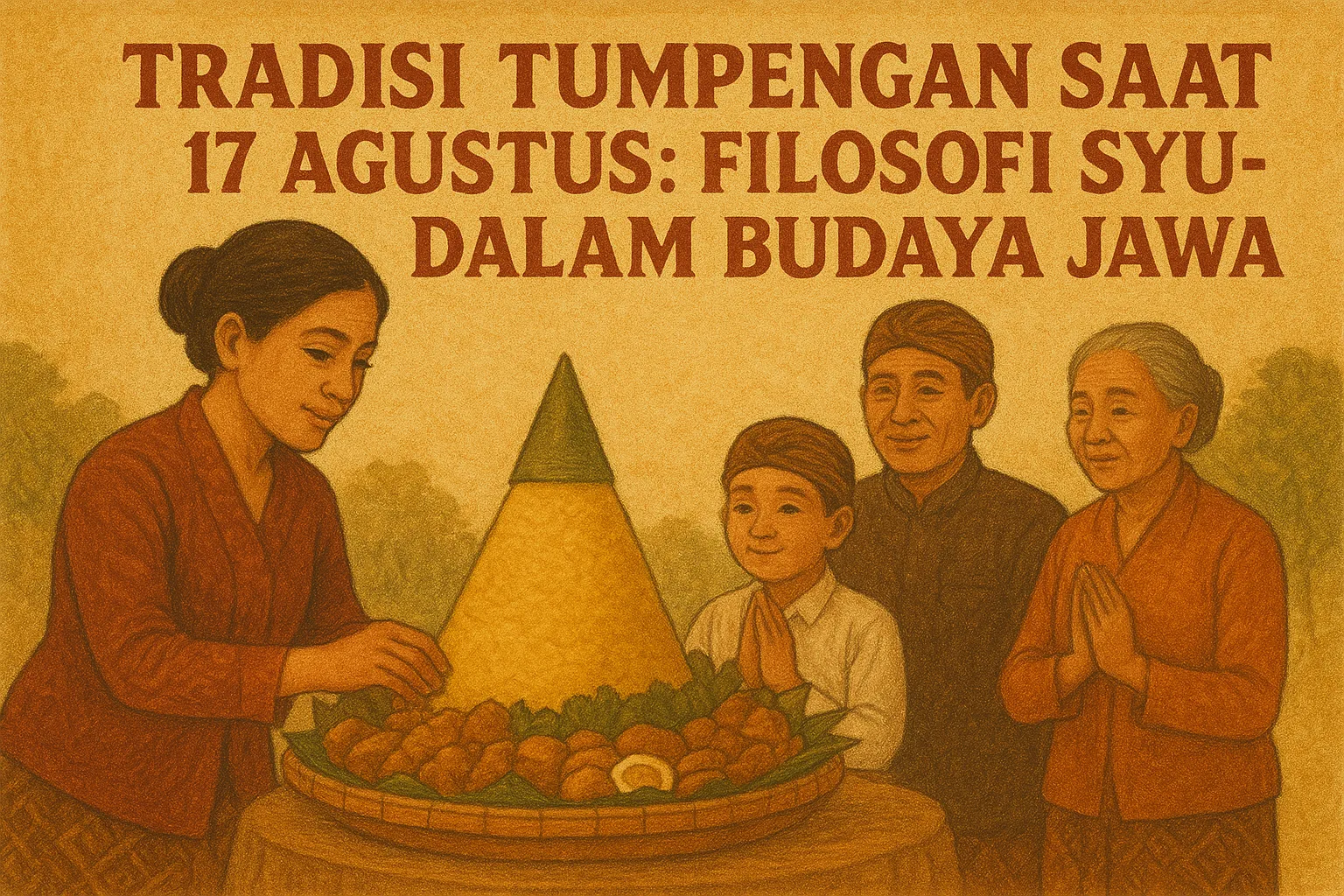Javanese news – Tumpeng rice is always present at the celebration of the Independence Day of the Republic of Indonesia, especially on the tirakatan night on August 17. The tradition of cone is full of philosophy of gratitude, togetherness, and the value of Javanese culture that is full of meaning.
Rice cone, icon celebration of seven dozens
Every time August arrives, the Indonesian people from the city to the village are preparing to celebrate the birthday of the Republic of Indonesia in various ways.
In addition to the typical seven competitions, there is a tradition that is almost never absent, namely the presentation of rice cone.
In many areas, especially in Java, the night before August 17 is always filled with joint or tirakatan prayers.
It was at that moment that rice cone was present as the main dish. Served on a tampah with a banana leaf, cone with a cone shape surrounded by various side dishes is a symbol of community gratitude for the blessings of independence.
More than just food, cone holds spiritual, social, as well as cultures that are passed down from generation to generation.
Philosophy of the shape and color of rice cone
The first thing that is immediately seen from the cone is its shape. Rice made like a cone symbolizes mountains, which in Javanese tradition is considered a spiritual high place. Mountain is seen as a symbol of closeness with the Creator as well as a sacred place of ancestors.
The color of rice also contains deep philosophy.
- White rice depicts purity and sincerity.
- Yellow rice symbolizes success, prosperity, and morals.
Thus, cone becomes a representation of prayer so that the Indonesian people always live peacefully, prosperous, and full of blessings.
Side dishes and meaning symbols
Tumpeng was never served alone. He is always accompanied by various side dishes and vegetables, each of which carries its own message:
- Chicken Ingkung – The whole chicken cooked with yellow spices and concentrated coconut milk symbolizes surrender to God. Roosters chosen so that humans learn to avoid bad traits such as arrogant or feel the most correct.
- Catfish – the symbol of fortitude and the ability to survive in difficult conditions, as catfish that can live in turbid water though.
- Anchovy – His life is always clustered, teaching the value of togetherness and unity.
- Boiled eggs – served intact so that everyone who eats it must peel first, symbolizing the importance of accuracy, planning, and complete business. Eggs also remind that all humans were created the same, the only difference of charity and piety.
- Urap vegetables-consisting of spinach, kale, long beans, bean sprouts, to kluwih, each of which holds meaning.
- Spinach means calm.
- Kale means protection.
- Janoge symbolizes growth.
- Long beans symbolize vision far ahead.
- The red chili at the top of the cone symbolizes the example and lighting for others.
- Kluwih means strength or privilege.
- Coconut grated as a spice of “ointment” symbolizes life.
- Fried sambal-made from tofu, potatoes, or tempeh which is cut into small pieces, reflecting the spirit of mutual cooperation and harmony.
Every side dish is not only a complement, but also how to teach moral values and philosophy of life.
Cone in Javanese and Islamic traditions
History records that cone existed before Islam entered Java. However, as the development of Javanese Islamic culture, cone was given a new meaning that was in line with religious teachings.
In the tradition of slametan, cone is usually accompanied by prayer or recitation. In fact, there is a Javanese acronym that slipped religious messages in it:
- Tumpeng: “Yen Metu Kudu Sing Mengeng” (if you come out must be serious).
- Buttures (pressed provided): “If you will be tighter” (if you use silly wisdom).
The number of side dishes that usually reaches seven kinds is also not without reason. In Javanese, the number seven is called sevenwhich is interpreted as help or help.
This is in line with the prayer in the Qur’an Surah Al-Isra verse 80, which was read by the Prophet Muhammad when he hijrah.
Thus, presenting a cone is not just a tradition, but a prayer so that every step of life is blessed with help from God Almighty.
Variations of cone in people’s lives
In addition to the independence cone, there are several other types of cone that are used for different events:
- Tumpeng Robyong: Usually for the marriage splash ceremony.
- Tumpeng Seven Months: Thanksgiving Seven months of pregnancy, consisting of one large cone and six small cone.
- Tumpeng Pungkur: Presented at the time of death of someone who is not married.
- White Tumpeng: Used in a sacred event, symbolizing purity.
- Yellow cone: used in happy events such as weddings or births.
- Tumpeng Uduk: Often present at the commemoration of the Prophet’s Birthday.
This diversity shows how cone has been closely attached to the lives of people as a symbol of prayer and gratitude.
Tumpengan August 17, a symbol of togetherness of citizens
On the commemoration of Independence Day, cone was not only present at an official event, but also at the village level. Many residents held a cone competition between RTs or just a simple selametan at the Village Hall.
After praying together, the shoot cone is usually cut and given to the elder or respected character. After that, all residents sat in a circle, eat together, and feel the warmth of togetherness.
The tradition of Tumpeng on August 17 is not only about culinary, but also about brotherhood, gratitude, and the spirit of maintaining independence together.
The tradition of Tumpengan on August 17 is a concrete manifestation of how Javanese culture is integrated with religious and national values. The shape of the cone, the color of the rice, until the side dishes are not just decoration, but are loaded with the philosophy of life, prayer, and gratitude.
In every bribe of cone, a message is stored so that the Indonesian people not only celebrate independence, but also maintain unity, harmony, and spirit of struggle.
***
Game Center
Game News
Review Film
Rumus Matematika
Anime Batch
Berita Terkini
Berita Terkini
Berita Terkini
Berita Terkini
review anime



